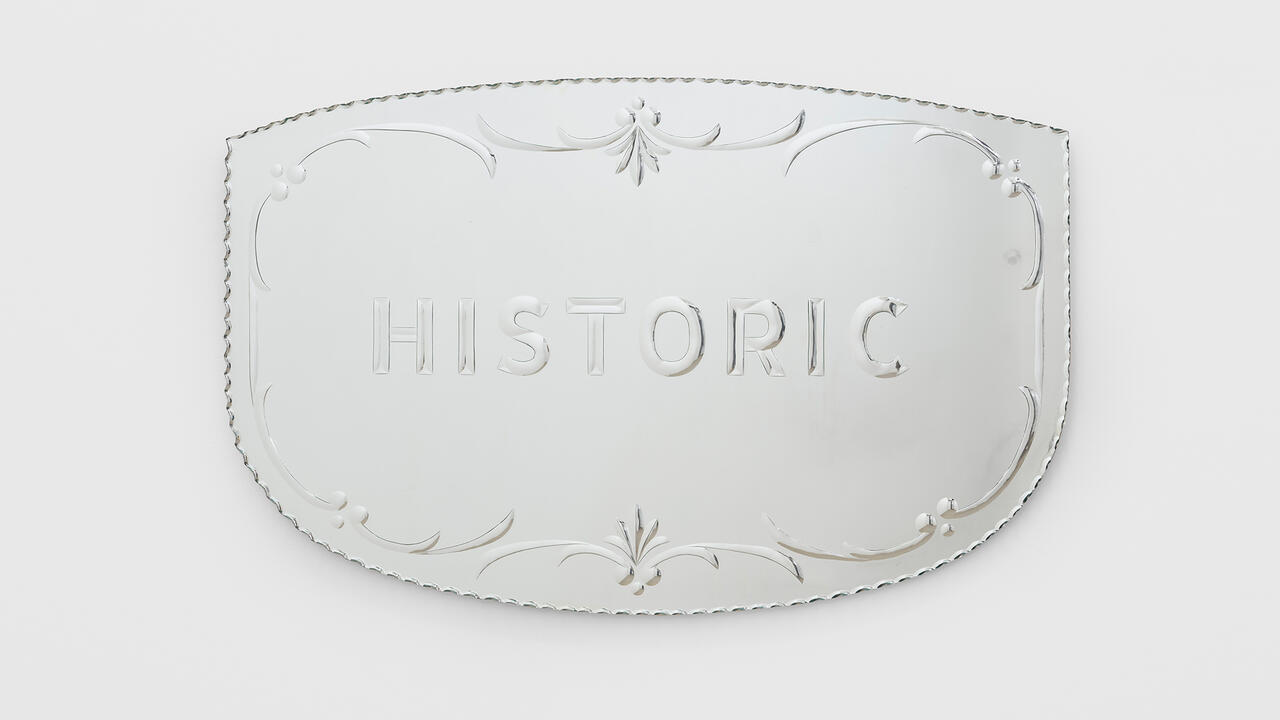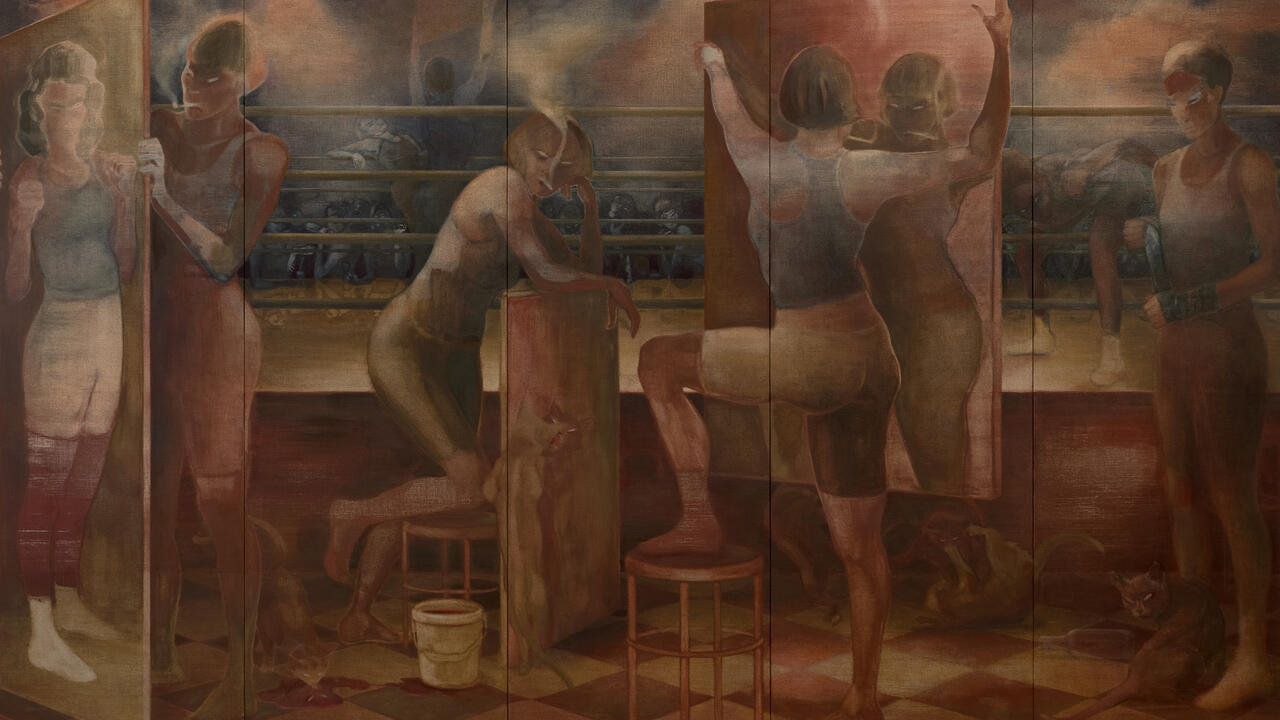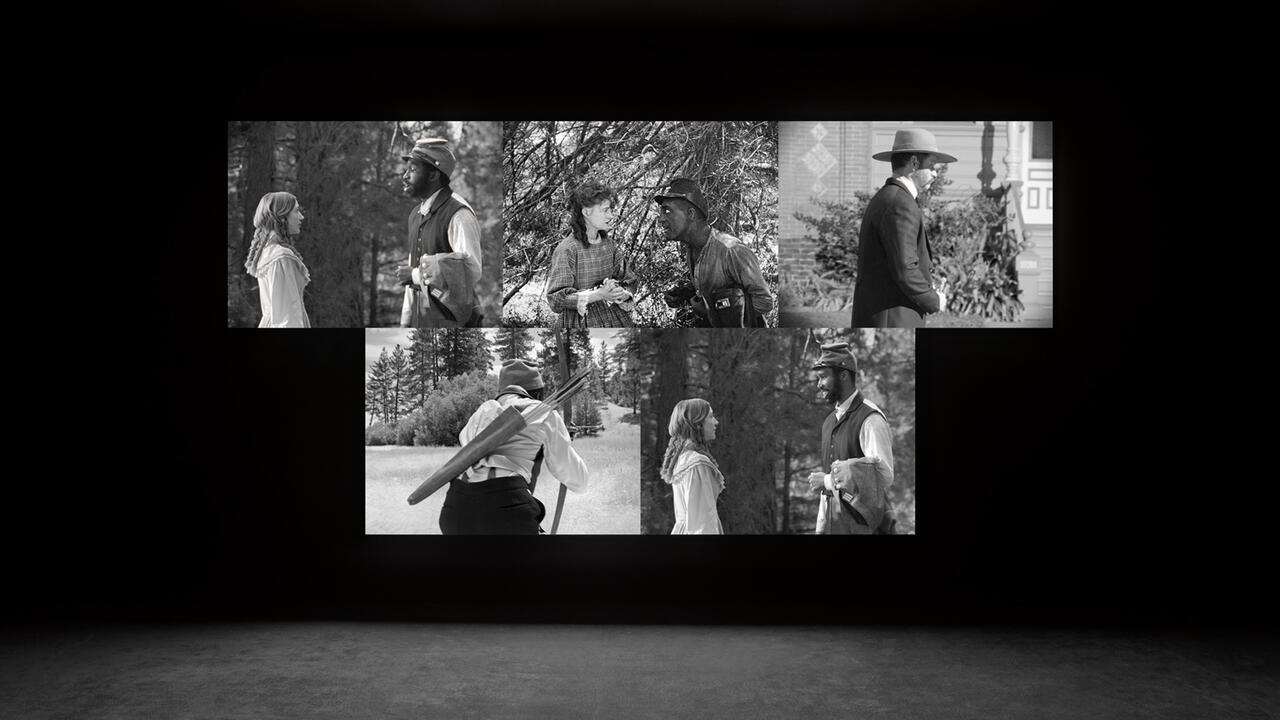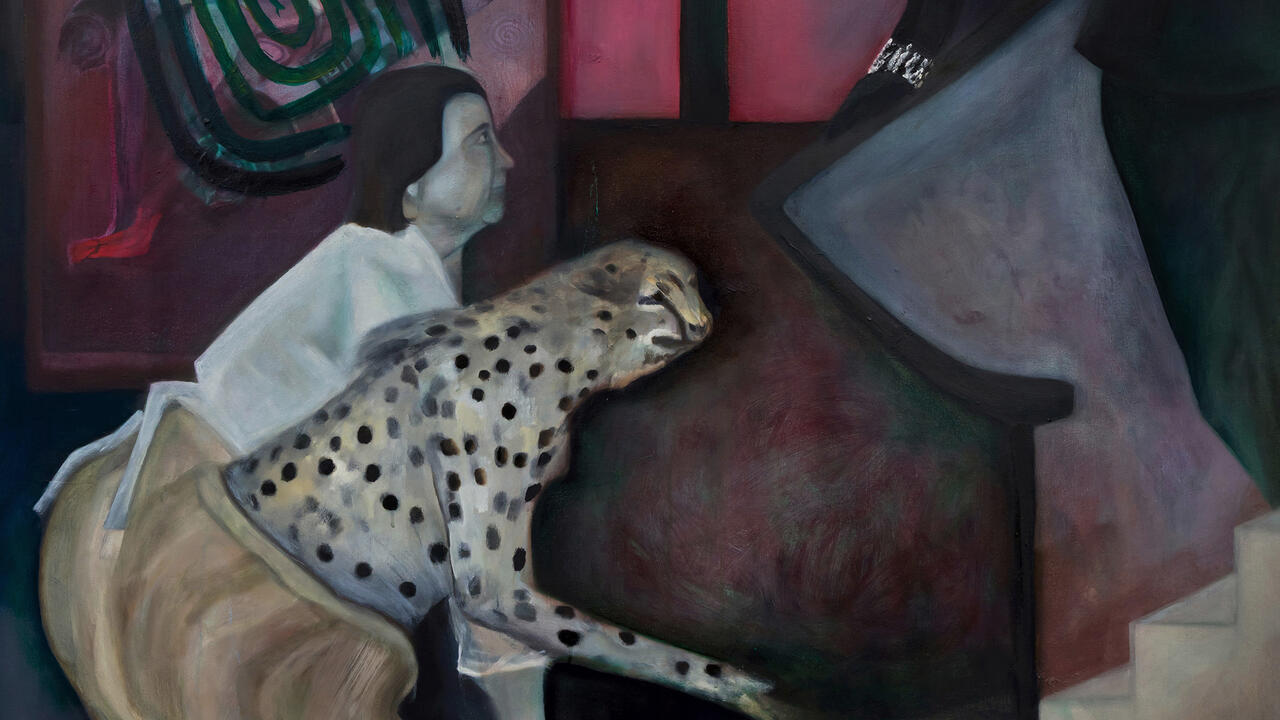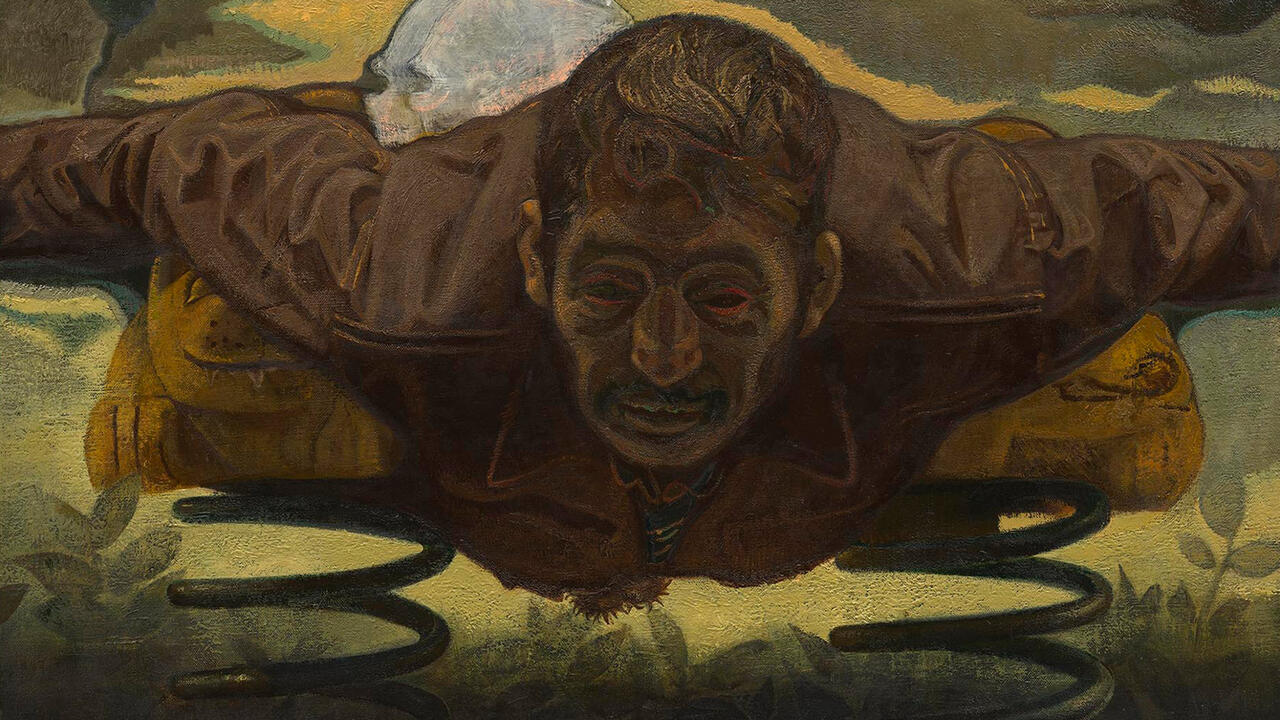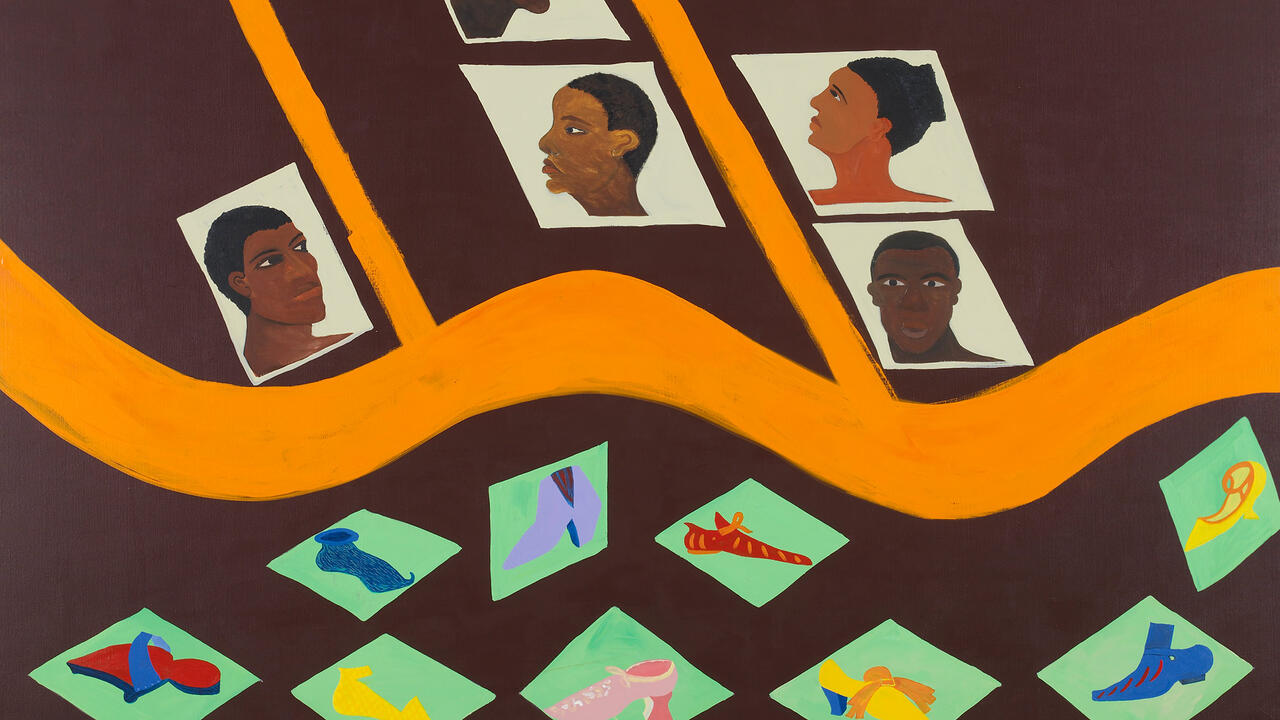The Mystery of the Eichstatt Tapestry
The first public exhibition of a 15th-century altar-hanging prompts the question: who made it?
The first public exhibition of a 15th-century altar-hanging prompts the question: who made it?

In Sam Fogg gallery’s latest exhibition of medieval and renaissance textiles in London, a German tapestry went on public display for the first time in its recorded history. Dated at around 1480 and woven from wool and linen in varying colours and configurations, it unrolls to reveal five scenes from the Life of Christ, vertically separated by column-like bands. Read from left to right, the scenes chronicle Christ (identified by his cruciform halo) appearing to his followers after his resurrection. Dressed in radiant white, he lifts his hand in benediction to a kneeling Mary Magdalene; disguised in a grey cloak, he greets two disciples on the road to Emmaus; reduced to no more than his feet, he disappears from the frame and ascends to heaven; rematerializing in the form of a dove on the day of Pentecost, he imbues the Virgin and apostles with the Holy Spirit; and, finally, enthroned on a rainbow during the Last Judgment, he displays his wounds before a sea of bodies.
Luxuriously decorated with swirling palm fronds set against a crimson background, the tapestry is as much a statement about wealth and status as it is a narrative image. While there is no direct evidence of how it was originally used, its excellent condition suggests it was displayed only on rare occasions – probably hung at an altar on certain feast days or presented to esteemed guests as a talking point.

The tapestry remains just as captivating to the contemporary eye. Viewing it up close, as flowers pixelate into diamonds floating bright against a spinning ground, you might be forgiven for thinking you’re looking at a 1980s videogame. Or a new age biology diagram: Christ’s blood-soaked footprints emerge in the shape of lungs from a network of arteries and foliage. Or a surrealist painting: the heads and hands of the damned whirl out of distant crevices, dripping and swelling into abstraction. Such delightful quirks are, in part, explained by the work’s singular weaving technique. In contrast to other tapestries of the period, which convey shading through interlocking triangulated grids, this piece models its subjects through fine alternations of coloured threads that swerve obliquely – allowing for a spontaneity and fluidity that couldn’t otherwise be achieved.
The snaking surface of the tapestry lends a certain naivety to its style: hands warp and bulge like reflections in a convex mirror; mouths clip and swerve into slits and squiggles; chins drop away into convoys of sloping threads. These eccentric figure types with their deviating outlines would be considered flawed by conventional standards and are unlikely to have derived from cartoons made by professional tapestry designers. Rather than tracing its lineage back from maker through artist to patron, this piece is more feasibly the product of a collaborative process, created in and for a local context.

In 1926, the scholar Betty Kurth saw the tapestry in the collection of Robert von Hirsch and put forward a compelling theory: that it had been commissioned for the monastery of Saint Walburg in Eichstatt – a convent which had taken in daughters of the local nobility and reached a position of extreme wealth and status by the late 15th century. Observing that its unique figural style echoed that of other objects catalogued in the monastery, she suggested the tapestry was produced by a regional workshop operating in close dialogue with the Eichstatt nuns. Yet, despite its plausibility, Kurth’s hypothesis has essentially lain dormant since its original publication, as the tapestry has passed through the hands of various private collectors, hidden from public view.
Four late 15th century altar-hangings depicting 23 scenes from the Fall of Man, the Life of the Virgin and the Life and Passion of Christ – on display at the Museo Nazionale del Palazzo di Venezia in Rome since 1948 – bear a striking similarity in style, format and materials to the Eichstatt tapestry. In 2017, the scholar Forte Grazzini, observing that these four panels share motifs with works in other media, proposed that they originated in the Middle Rhine. Given the widespread circulation of prints in the 15th century, and their free and frequent use as compositional models, these aesthetic parallels might be no more than coincidental. However, with the exhibition of the Eichstatt tapestry in London bringing Kurth’s hypothesis back into focus, the possibility that these panels comprise a coherent set merits serious consideration.

The iconography of the five Eichstatt panel scenes invokes the presence of the nuns – particularly the first and final images, which thematize how the female penitent relinquishes sin through the love of Christ. In the former, Mary Magdalene, dressed in an elaborate robe lined with ermine, her hair unbound and partially veiled as a sign of her attempts to redeem her sins, holds an ointment pot (a costly token of her devotion); the latter, depicting the Last Judgment, works in dialogue with the Magdalene by dramatizing the final bid for salvation. The second and fourth scenes present themes for moving from despair to belief, tribulation to triumph, through faith in Christ and devotion to the Church. A disciple splays his arms in woe having not yet discerned Christ in his risen state. Meanwhile, the Virgin leads the apostles out of darkness as Mater Ecclesiae while the Holy Ghost descends at Pentecost. Finally, the central scene presents the prototype of monastic devotion: John the Evangelist, who folds his arms in reverence to the Virgin during Christ’s ascension. As the apostle who witnessed Jesus on the cross and took the Virgin into his care at Christ’s plea, John is the model for giving oneself over to the Church.
Woven on a single loom in a fashion that’s at once theologically sophisticated, technically improvisational and graphically amateur, the tapestry – scholarly opinion is now suggesting – was likely created by the Eichstatt nuns themselves. Idiosyncrasies in the surface design make this hypothesis a compelling one. The jarring tension between the symmetrical patterning of the figures’ robes and the asymmetry of the meandering foliate background, for instance, destabilizes three-dimensional space, defying and overturning logic in the presence of God. Meanwhile, certain design flourishes – such as the hopscotching of leaves from dark to light as Christ appears to the Magdalene – pay tribute to the significance of the scenes. The nuns of Eichstatt, we can imagine, contemplated the acts of penitence, faith and reverence represented by this tapestry not only in viewing but also in making. Taking their turns on the loom, weaving their way out of sin.
Main image: Tapestry with Scenes from the Life of Christ, Central Germany, possibly Eichstatt, c.1480, wool, linen wefts with an undyed wool warp, 61 x 234 cm. Courtesy: Sam Fogg, London









